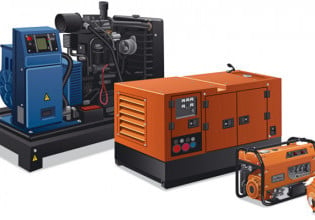$36 Million ARPA-E Program Funds “Revolutionary” EV Battery Technologies
Advanced Research Projects Agency-Energy (ARPA-E) Deputy Director Cheryl Martin announced that 22 projects across 15 states will receive a total of $36 million to develop transformational electric vehicle (EV) energy storage systems using innovative chemistries, architectures and designs. ARPA-E’s new program, Robust Affordable Next Generation Energy Storage Systems (RANGE), aims to accelerate widespread EV adoption by dramatically improving driving range and reliability, and by providing low-cost, low-carbon alternatives to today’s vehicles. Among the companies receiving funding were EnZinc, Inc., BASF, General Electric, Cloteam LLC, Quallion, Ceramatec, Solid Power LLC, and Bettergy.
EnZinc will use its $448,680, in collaboration with the U.S. Naval Research Laboratory, to develop a low-cost dendrite-free zinc-air battery technology. Currently, zinc-air batteries are low power and offer a limited cycle life. EnZinc’s porous, sponge-like zinc component prevents battery failure and enables high-power charge and discharge. If successful, EnZinc’s zinc-air technology could reduce electric vehicle battery cost by more than half.
With $4,000,000, BASF was the largest award winner. It will develop rare-earth-free metal-hydride alloys using new, low-cost metals for use in high-energy nickel-metal hydride (NiMH) batteries. Conventional water-based NiMH batteries use rare earth metals and have a limited capacity that results in decreased driving range. BASF’s rare earth-free components could offer both lower cost and improved capacity while maintaining many of the traditional characteristics of NiMH batteries, including simple design, low volume, and long service life.
General Electric (GE) will use its $899,958 award to develop an innovative high-energy chemistry for a water-based flow battery. Current flow batteries are generally low-energy density and only used for stationary energy storage. If successful, GE’s new chemistry could enable the use of flow batteries in electric vehicles and improve driving range, cost, and reliability.
Cloteam LLC won $3,500,000 to develop an innovative system to join and package batteries using a wide range of battery chemistries. Unlike today’s battery pack design, Cloteam’s design enables flexible placement of battery packs to absorb and manage the impact energy from a collision. Cloteam’s batteries could provide greater energy density compared to today’s lithium-ion batteries, while reducing the costs associated with materials and processing.
The $511,323 received by Quallion will be used to develop a lithium-ion technology with integrated safety features that can prevent local overheating before an entire battery becomes compromised. Electric vehicle batteries currently require thermal and mechanical safeguards to prevent overcharging, overheating, and cell damage. Quallion’s battery will include new components to isolate damage and reduce the need for additional packaging and shielding.
Ceramatec will use its $2,966,691 award to develop a non-porous, high-conductivity ceramic membrane for lithium-sulfur batteries to minimize self-discharge, provide mechanical integrity, and extend battery life. Current porous separators contain liquids that negatively impact cycle life and have a low abuse tolerance. Ceramatec will demonstrate its innovative, low-cost, non-porous membrane with a prototype lithium-sulfur battery that also contains advanced electrolytes developed for this system.
Solid Power was awarded $3,459,250 to develop a new low-cost, all-solid-state battery for electric vehicles with improved energy density and safety than conventional lithium-ion batteries. Solid Power’s liquid-free cells use non-flammable and non-volatile materials that result in greater stability in the event of a collision or elevated temperature. Additionally, the use of low-cost, abundant materials in Solid Power’s battery construction will result in lower material costs.
Bettergy received $387,572 to develop an inexpensive battery that uses a novel combination of solid, non-flammable materials to yield an energy density suitable for modern electric vehicles. Today’s electric vehicle batteries require costly materials and expensive safety architectures. In contrast to today’s electric vehicle battery chemistry, Bettergy’s alternative will use low-cost energy storage materials combined with non-flammable components to produce batteries with comparable energy density, but enhanced strength and robustness.
“The breadth and volume of technology approaches embodied in the RANGE projects demonstrate ARPA-E’s commitment to transformational innovation,†said Deputy Director Cheryl Martin. “The success of RANGE battery technologies will reshape our thinking on EV storage and help reduce U.S. dependence on foreign energy sources, decrease emissions and help maintain our technological lead in R&D.â€
ARPA-E’s RANGE program seeks to improve EV driving range and reduce vehicle costs by re-envisioning the total EV battery system, rather than working to increase the energy density of individual battery cells. Some of the projects selected will focus on developing robust battery chemistries and architectures that would improve vehicle driving range and overall battery robustness. For example, Solid Power located in Louisville, CO will receive approximately $3.5 million to develop a solid-state Lithium-ion battery that requires less protective packaging, which reduces cost and overall vehicle weight to improve driving range.
RANGE projects will also focus on multifunctional energy storage designs that use these robust storage systems to simultaneously serve other functions in a vehicle, further reducing an energy storage system’s effective and overall EV weight. In addition to the companies detailed above, several universities and laboratories received funding including: University of Houston, Princeton University, University of California Los Angeles, Jet Propulsion Laboratory, University of Maryland, Stanford University, University of California San Diego, Arizona State University, Penn State University, Illinois Institute of Technology, National Renewable Energy Laboratory, Oak Ridge National Laboratory, , and Perdue University. For example, the University of California, San Diego will receive approximately $3.5 million to engineer a low-cost, low-weight battery and to redesign vehicle frames so the battery becomes an integral part of a vehicle’s support structure.






